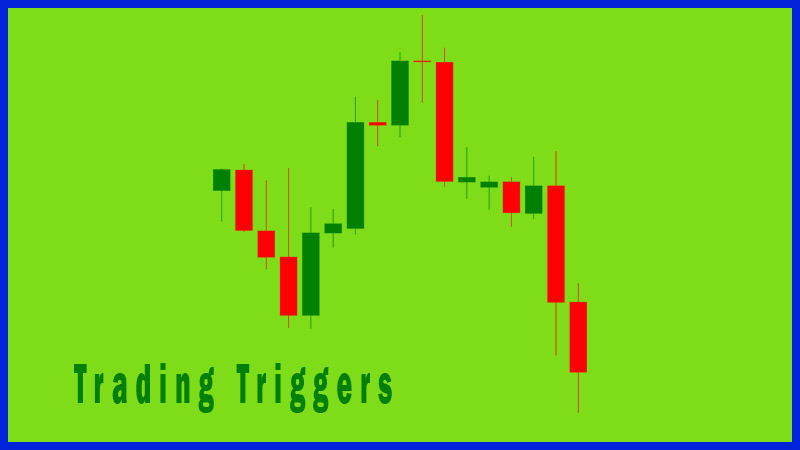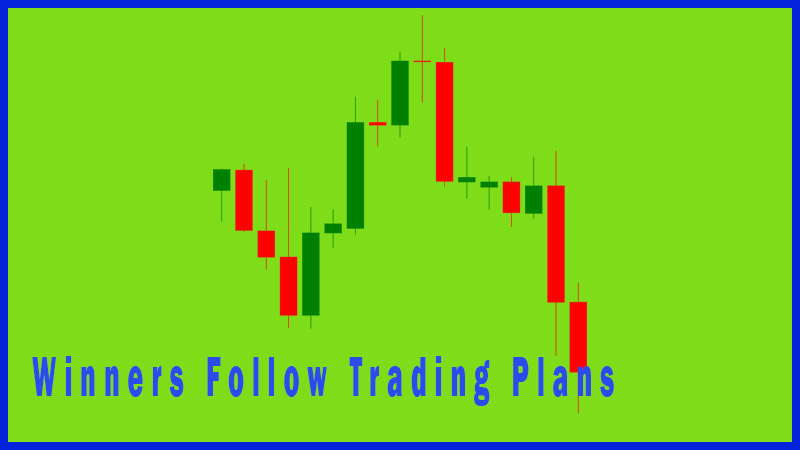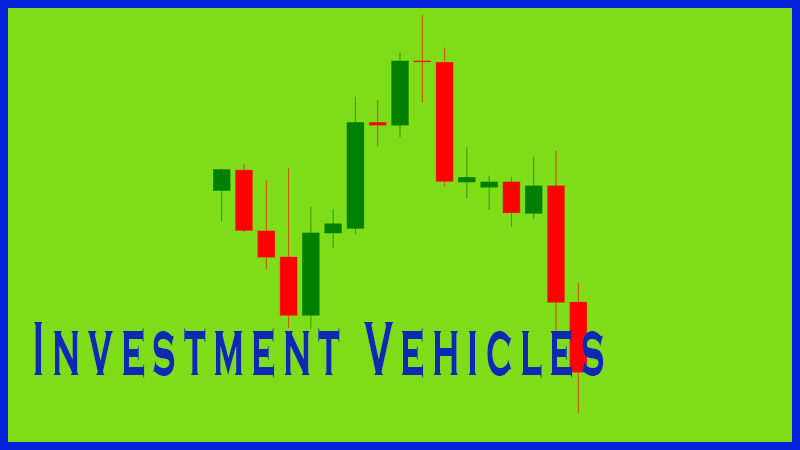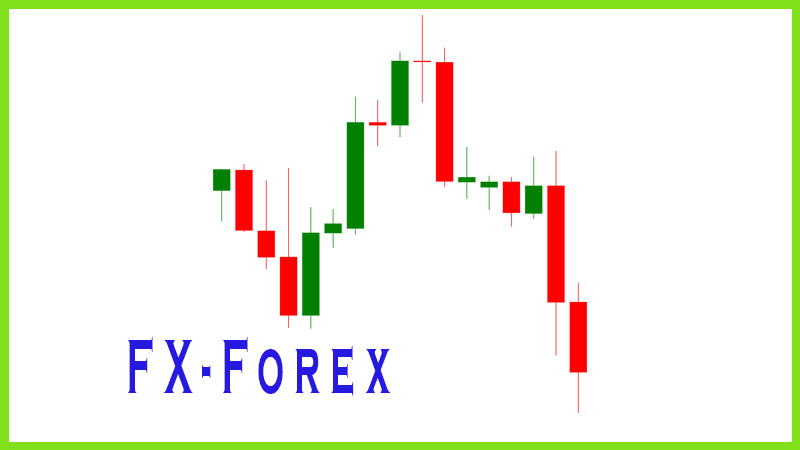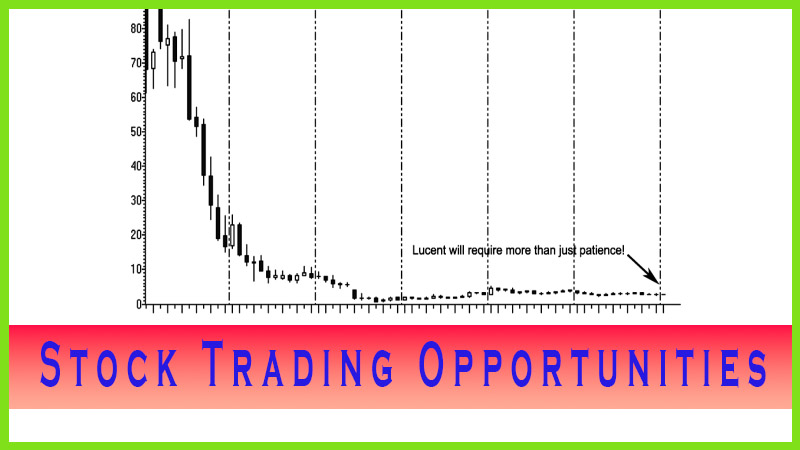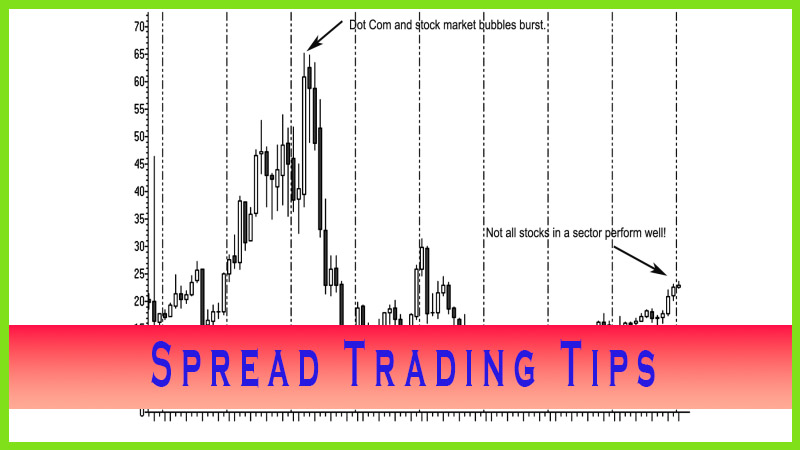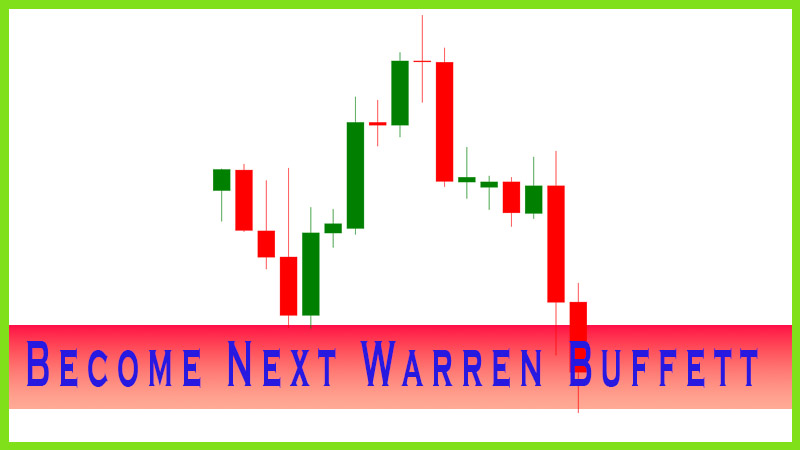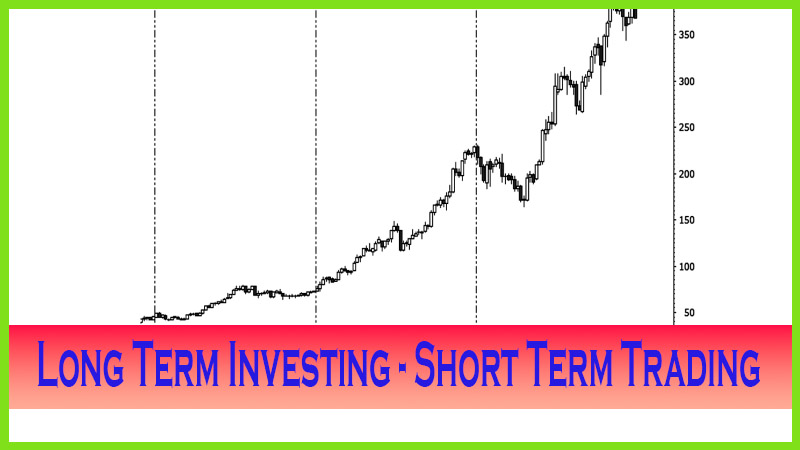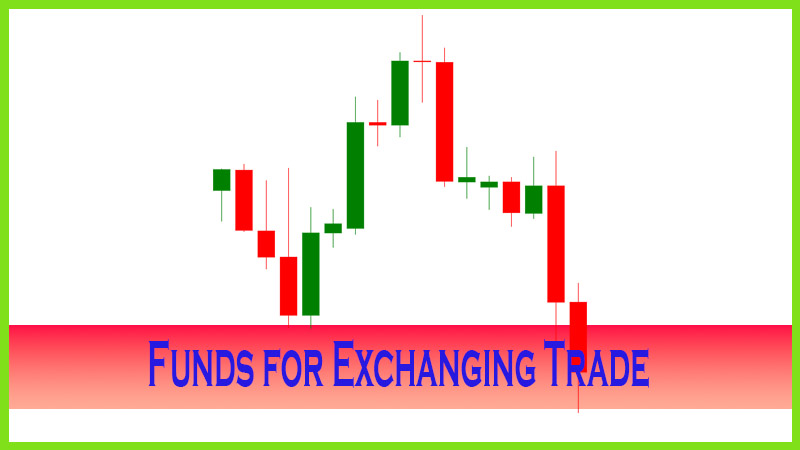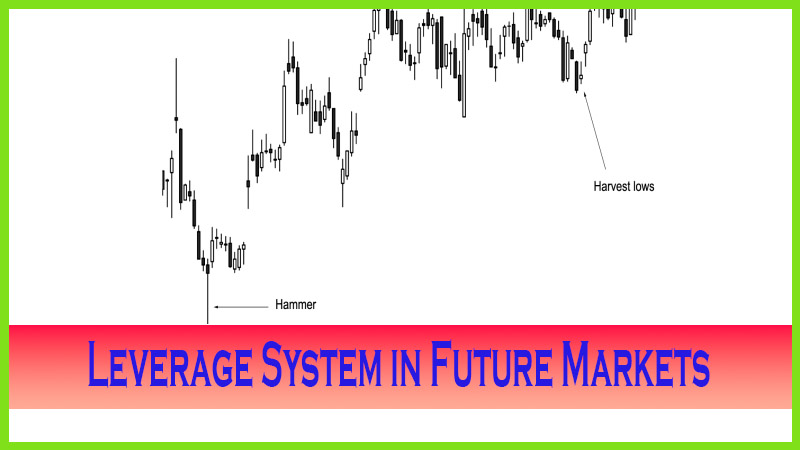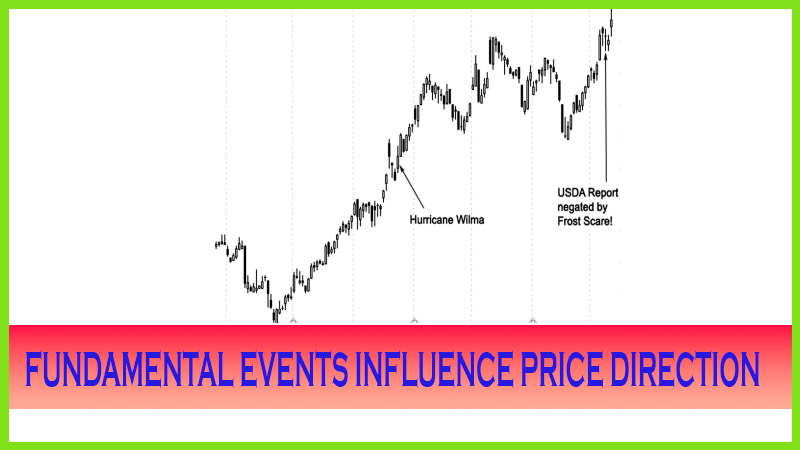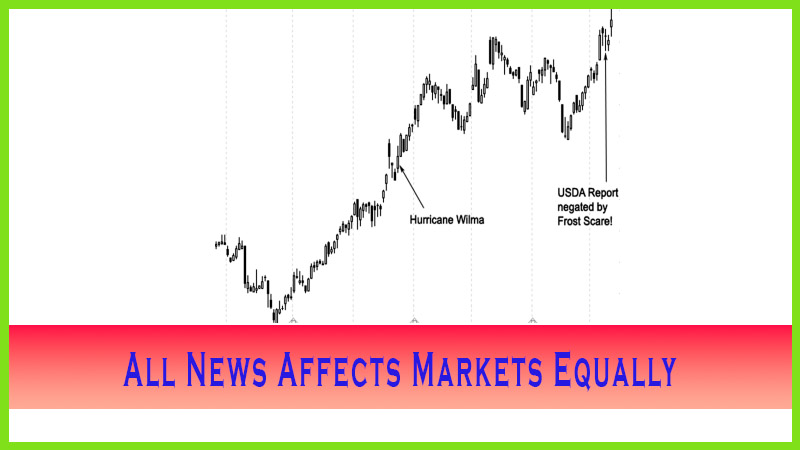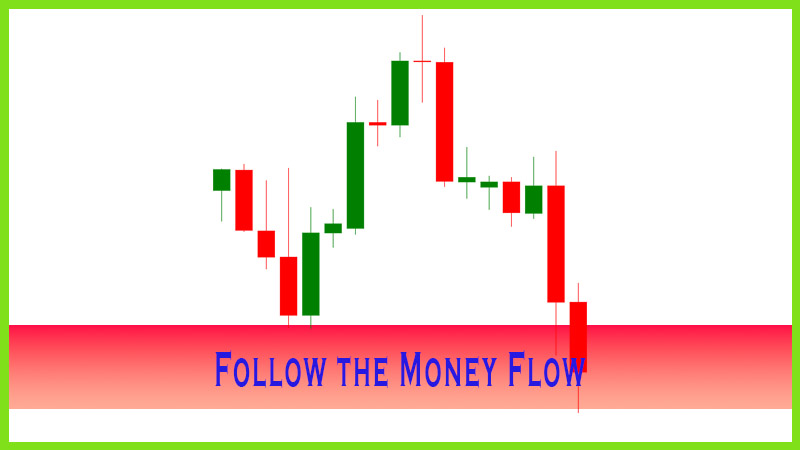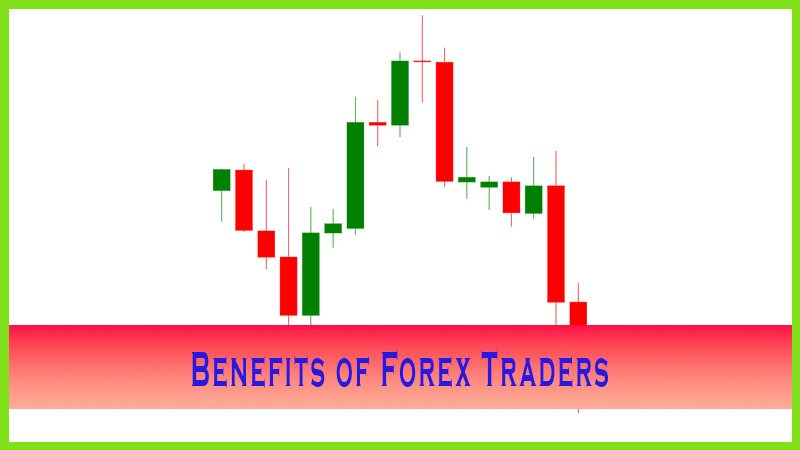The Currency Cash Machine
Margin and Leverage, Long or Short, Benefits for Selling Short, Famous Short Plays, Buy and Sell the Spread
Course: [ The Candlestick and Pivot Point Trading Triggers : Chapter 1. Trading Vehicles, Stock, ETFs, Futures, and Forex ]
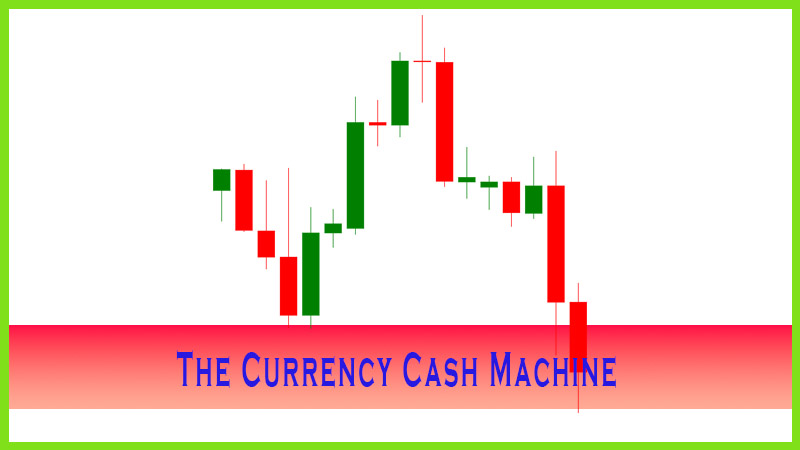
Foreign exchange currency trading, otherwise known as the forex market, offers an investment asset class that is completely different from stocks of futures and offers leverage and virtually unrestricted access 24 hours a day.
FOREX, THE CURRENCY CASH MACHINE
Foreign
exchange currency trading, otherwise known as the forex market, offers an
investment asset class that is completely different from stocks of futures and
offers leverage and virtually unrestricted access 24 hours a day. Forex trades
virtually around the clock, from when the Asian market opens on Sunday night
until the U.S. markets close on Friday afternoon. One of the attractions from
an individual trader’s perspective is that there is this constant access to
make a trade.
Forex is
the simultaneous buying of one currency and selling of another. In other words,
currencies are always traded in pairs; in every transaction, a trader is long
one currency and short the other. A position is expressed in terms of the first
currency in the pair. For example, if you have purchased euro and sold U.S.
dollars, it would be stated as a euro/dollar pair.
The
foreign exchange market (forex, or FX) is the largest and most liquid financial
market in the world, with a volume of over $1.5 trillion daily— more than three
times the aggregate amount of the U.S. Equity and Treasury markets combined.
This means that a trader can enter or exit the market at will in almost any
market condition with minimal execution risk. The forex market is so vast and
has so many participants that no single entity, not even a central bank, can
control the market price for an extended period of time. Unlike other financial
markets, the forex market has no physical location, no central exchange. It
operates through an electronic network of banks, corporations, and individuals
trading one currency for another. The lack of a physical exchange enables the
forex market to operate on a 24-hour basis, spanning from one zone to another,
across the major financial centers.
Margin and Leverage
The forex
market allows traders to control massive amounts of leverage with minimal
margin requirements; some firms offer as much as 100-to-1 leverage. For
example, traders can control a $100,000 position with $1,000, or 1 percent.
Obviously, leverage can be a powerful tool for currency traders. While it does
contribute to the risk of a given position, leverage is necessary in the forex
market because the average daily move of a major currency is about 1 percent,
while a stock typically sees much more substantial moves.
Leverage
can be seen as a free short-term credit allowance, just as it is in the futures
markets, allowing traders to purchase an amount of currency exceeding that of
their account balance. As a result, traders are exposed to an increased level
of both risk and opportunity. Due to the nature of the leverage in the forex
markets, positions are normally short-lived. For this reason, entry and exit
points are crucial for success and must be based on various technical analysis
tools. While fundamental analysis focuses on what should happen, technical
analysis is based on what has or is happening at the current time.
Identifying
the overall trend, whether it is short-term or long-term, is the most
fundamental element of trading with technical analysis. A weekly or monthly
chart should be used to identify a longer-term trend, while a daily or intraday
chart must be used for examining the shorter-term trend. After determining the
direction of the market, it is important to identify the time horizon of
potential trades and to apply those strategies to the appropriate trend.
Therefore, the techniques covered in this book are highly effective in trading
the forex markets.
Technical
analysis is the study of historical prices in an attempt to predict future
price movements. There are two basic components on which technical analysis is
based: prices and volume. By having the proper understanding of how these two
components exploit the impact of supply and demand in the marketplace, with a
stronger understanding of how indicators work, especially when combining candle
charts and pivot analysis, you will soon discover a powerful trading method to
incorporate in the forex market.
Long or Short
One of
the advantages that the forex market has over equity markets is that there is
no uptick rule, as exists in the stock market, if one wants to take advantage
of a price decline. Short selling in forex is similar to that in the futures
market. By definition, when a trader goes short, he is selling a currency with
the expectation that the price will drop, allowing for a profitable offset. If
the market moves against the trader’s position, he will be forced to buy back
the contract at a higher price. The result is a loss on the trade. There is no
limit to how high a currency can go, giving short sellers an unlimited loss
scenario. Theoretically, a short seller is exposed to more risk than a trader
with a long position; however, through the use of stop loss orders, traders can
mitigate their risk regardless of long or short positions. It is imperative
that traders are well-disciplined and execute previously planned trades, as
opposed to spontaneous trading based on a “feeling that the price will
decline.”
Benefits for Selling Short
There are obvious benefits
to short selling. This aspect of the forex market allows traders to profit from
declining markets. The ease of selling con-tracts
before buying them first is in contrast to typical stock trading. Market prices
have a tendency to drop faster than they rise, giving short sellers an
opportunity to capitalize on this phenomenon. Similarly, prices will often
rally gradually with increasing volume. As prices trend toward a peak, trading
volume will typically taper off. This is a signal that many short sellers look
for to initiate a trade. When a reversal does occur, there will typically be
more momentum than there was with the corresponding up move. Volume will
increase throughout the sell-off until the prices reach a point at which
sellers begin to back off.
Famous Short Plays
There
have been quite a few milestone memories from famous currency trades, with both
short positions and long. For example, famed financier George Soros “broke” the
Bank of England by winning an estimated $10 billion bet that the British pound
would lose value! How about Daimler Chrysler, the parent company of Chrysler
and Mercedes Benz—reportedly it made more money in the forex markets than it
did selling cars! On the negative side, in early 2005, Warren Buffett announced
the U.S. dollar was in trouble and stated he was heavily short the U.S.
currency. That did not turn out well for him, as the dollar rallied for the
most part during all of 2005. What turned the market around? There were many
issues mainly political, geopolitical, and economic developments that
influenced the dollar’s value. For starters, many U.S.-based multi conflomerate
corporations were prompted to bring money back into the United States due to
the Homeland Investment Act (HIA). The HIA is part of 2004 American Jobs
Creation Act and was intended to encourage U.S.-based companies to bring money
back home.
The
window of opportunity afforded by the HIA prompted companies to increase the
pace at which funds are repatriated to the United States. Since companies had
only until the end of 2005, many analysts suspected that companies would rush
to repatriate foreign profits by year’s end and that there would be a high
dollar demand to convert foreign currencies. Don’t forget, during the middle of
2005, there were riots in France. That contributed to poor market sentiment
toward the euro zone, thus giving ground for a flight to safety, and helped
foreign investors switch to buying U.S. dollars. The tone was essentially
dollar-positive and euro-negative, which is indicative of politics having a
negative effect on the euro. Meanwhile, the broader market was also most likely
influenced by the high profile move by Berkshire Hathaway, Inc.’s, Warren
Buffett to cut back speculative positions against the U.S. dollar after losing
big on it due to surprising dollar strength.
Mr.
Buffett had bet that the dollar would continue losing ground, as it did in
2004, as he felt the massive U.S. current-account deficit would be dollar
negative. But instead, monetary policy dictated otherwise as the Federal
Reserve continued to raise interest rates. That was helping to drive demand as
the interest rate differentials widened. In its third-quarter report in 2005,
Berkshire Hathaway said it had cut its foreign-currency exposure to $16.5
billion, down from $21.5 billion in June 2005.
As you
can see from the dollar Index weekly chart in Figure 1.34, on a year-to-year
basis, the dollar did make an outstanding run. However, keep in mind that the
dollar was at a high of 120.80 back in 2002; so depending on where Buffett was
shorting the dollar, he could still be in a lucrative position. The focus of
this story is how shifts in monetary and fiscal policies can and do dictate
price swings in the market, as happened in 2005.
Forex
trading is considered the juggernaut in the investment world, with more than
3.5 trillion in currency trading taking place per day, according to the Bank
for International Settlements. There is more daily volume in the forex market
than in all of the U.S. stock markets combined. There is no doubt that that is
one reason why foreign currency has become so popular.
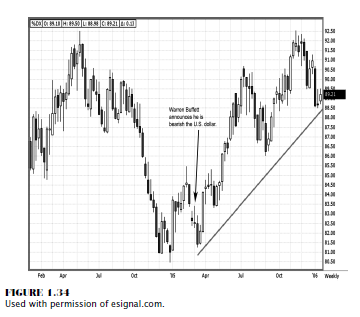
Other reasons why forex attracts so
many individual investors are that the market has liquidity and favorable
trading applications, such as the ability to go long or short a position, and
that it trends and trades well, based off technical analysis studies.
In the
past, currency trading was accessible for speculators through the futures
industry when the central marketplace in the banking arena was for the
privileged few. This has all changed now, and the competition is fierce. The
industry has expanded from what was an exclusive club of proprietary traders
and banks to a location where any and all individual traders who want to
participate have access in this 24-hour market from their home or office
computers or laptops.
The forex
markets offer traders free commissions, no exchange fees, on-line access, and
plenty of liquidity. Unlike the futures products, the markets are standardized
contract values, meaning a full-size position is 100,000 value across the
board. The one main element that attracted investors is the commission-free
trading. Plus, most forex firms require less capital to initiate a start-up
account than a futures account does. In fact, investors can open accounts on
their debit and/or credit cards, and the practice of accepting payments online
through PayPal exists.
Some
firms offer smaller-size flexi accounts, allowing traders to start applying
their skills at technical analysis with as little as $500 and trading ultra mini-accounts
with leverage. This feature of what is known as mini-accounts allows individual
investors to adjust their positions by not having too big a contract value per
position; they can add or scale into greater or lesser positions to adjust the
level of leverage according to their account size. Smaller-size investors are
not excluded from trading; they can participate with mini-contracts. What is
great about this feature is that a new trader or an experienced trader who is
testing a new system can trade the market with real money, rather than simply
paper trading, and benefit from the actual experience of working out execution
issues and, more important, of seeing how they handle the mental or emotional
side of trading. Having real money on the line certainly helps teach people to
learn about their emotional makeup. This is one great way to overcome the
fear-and-greed syndrome that many traders seem to battle. Another excellent
quality that forex mini-accounts have is that traders with low-equity accounts
can afford to trade multiple positions without being exposed to excessive risks
like full-sized positions for scaling out of positions in order to let a
portion of the position ride a profitable position, while capturing profits on
a partial exit. We will go over more on that style of trading later.
What Benefits Do Forex Firms Offer?
Besides offering leverage
accounts, other benefits that most forex companies offer are free real-time
news, charts, and quotes with state-of-the-art order-entry platforms; and some even have automated
order-entry features such as one cancels the other and trailing stops. All of
these tools and order-entry platforms come at no additional charge to the
trader.
These
features may sound too good to be true. With all the benefits that the forex
market offers, most newcomers want to know what the catch is. There are some
slight cost factors that relate to execution; you pay a premium or a higher
spread to buy and a higher spread to sell. Also, most forex companies take the
other side of your trade; you do not have direct access to the interbank
market, as it is called. Since the forex market is decentralized, it is possible
that five different companies are showing five different prices all at the same
time within a few points (PIPs—percentage in points). Since most forex traders
are short term in nature, meaning they are quick in-and-out players, day
trading in the forex markets is beneficial for these traders due to the fact
that there are no commissions; but the PIP spreads can and do add up. There
lies the catch.
Buy and Sell the Spread
Forex
prices, or quotes, include a “bid” and an “ask” similar to other financial
products. The bid is the price at which a dealer is willing to buy and a trader
can sell a currency; and the ask is the price at which a dealer is willing to
sell and a trader can buy a currency. In forex trading, unlike futures or
equities, you have to pay a percentage in price (PIP) spread on entering a
trade. The PIP spread is the point difference between the bid and the asking
price of the spot currency price. This can vary between two and four PIPs on a
euro versus U.S. dollar spread. The spread varies on other currency pairs and
is usually wider on more exotic cross markets, such as the Canadian dollar versus
the Swiss franc.
If you want to hold a position for
several days, a rollover process is necessary. In the spot forex market, all
trades must be settled within two business days at the close of business at 5
p.m. (EST). The only fee involved here is the interest payment on the position
of currency held. At times, depending on the position, a trader can receive an
interest payment as well. This is where the term tomorrow/next (Tom/Next)
applies. It refers to the simultaneous buying and selling of a currency for
delivery the following day.
As with
futures, forex markets are now regulated to an extent and come under the
scrutiny of the self-imposed regulators, such as the National Futures
Association after the CFTC Modernization Act passed in 2002; but since there is
no centralized marketplace, many forex dealers can and do make their own
markets, as discussed earlier.
Why Trade Spot Forex Markets?
Of all
financial instruments traded, forex is believed by many professional traders
and analysts to be one of the best-suited markets to trade based off technical
analysis methods, for a number of reasons. First is its sheer size in trading
volume: According to the Bank for International Settlements, average daily
turnover in traditional foreign exchange markets amounted to $1.9 trillion in
the cash exchange market and another $1.2 trillion per day in the
over-the-counter (OTC) foreign exchange and interest rate derivatives market as
of April 2005. Second, the rate of growth and the number of market participants
in forex trading have grown some 2,000 percent over the past three decades,
rising from barely $1 billion per day in 1974 to an estimated $2 trillion by
2005. Third, since the market does not have an official closing time, there is
never a backlog or “pool” of client orders parked overnight that may cause a
severe reaction to news stories hitting the market at the U.S. Bank opening.
This generally reduces the chance for price gaps. Currencies tend to experience
longer-lasting trending market conditions than other markets. These trends can
last for months or even years, as most central banks do not switch interest
rate policies every other day. This makes them ideal markets for trend trading
and even breakout systems traders. This might explain why chart pattern
analysis works so well in forex trading. With such widespread groups playing
the game around the world, crowd behavior plays a large part in currency moves;
and it is this crowd behavior that is the foundation for the myriad of
technical analysis tools and techniques.
Due in
part to its size, forex is less volatile than other markets. Lower volatility
equals lower risk. For example, the S&P 500 Index trading range is between
4 percent and 5 percent daily, while the daily volatility range in the euro is
around 1 percent.
Trading
veterans know that markets are interdependent, with some markets more heavily
influenced by certain markets than others. We covered some of these
relationships looking at futures and certain stocks and how changes in interest
rates can move equity markets as well as the currencies markets. We will learn
in coming chapters how to detect hidden yet repeating patterns that occur
between these related markets and how forex traders can profit from these
patterns.
Which Is Bigger—Stocks or Forex?
Forex is
by far the largest market in dollar volume, is less volatile, experiences
longer and more accentuated price trends, and does not have trading
commissions. Forex is the ideal market for the experienced trader who has paid
his or her “trading tuition” in other markets. However, there are no free
lunches. Traders must use all the trading tools at their disposal. The better
these fundamental and technical tools, the greater is their chance for trading
success. While inter-market and other relationships are often complex and
difficult to apply effectively, with a little high-tech help, traders and
investors can enjoy the benefits of using them without having to scrap their
existing trading methods.
Forex versus Futures
The
futures market through the International Monetary Market (IMM) of the Chicago
Mercantile Exchange has many benefits as well. Some believe there are tighter
spreads between the bid and the asking price, plus there is no interest charge
or rollover fee every other day. In addition, the futures markets offer options
for longer-term traders. There are transactions costs that apply per round
turn; but if the brokerage commission exchange, regulatory, and transaction
charges are less than the PIP spread in forex, an active speculator would be
given a better cost advantage by using the futures markets instead of the forex
spot markets.
Let’s
compare a trade in forex to a trade with a similar-size contract value on the
futures exchange, using the example of a euro futures contract on the CME,
where it has a contract size of USD 125,000 worth of euros, where each PIP
would be 12.50 in value. If the commissions and related fees are on a par with
most discount brokerage firms, $20 is your transaction cost per round turn,
that is, $10 to buy and $10 to sell out the position. Keep in mind that the
contract value is 25 percent higher than a full- size forex position, too. If a
day trader in forex does a $100,000 full-lot-size contract and pays three PIPS
on every transaction for both the entry and the exit of each position, this
trader would be charged $30 per round-turn transaction.
The
futures arena also has other interesting features and products; one is the U.S.
dollar Index® contract traded on the New York Board of Trade, as was shown in
Figure 1.34. That index is computed using a trade- weighted geometric average
of six currencies. It virtually trades around the clock—the trading hours are
from 7 p.m. to 10 p.m., then from 3 a.m. to 8:05 A.M., and then from 8:05 a.m.
to 3 p.m. Unlike the forex, there are daily limits on the price movement with
200 ticks above and below the prior day’s settlement, except during the last 30
minutes of any trading session, when no limit applies. Should the price reach
the limit and remain within 100 ticks of the limit for 15 minutes, then new
limits will be established 200 ticks above and below the previous price limit.
Figure 1.35 shows a breakdown of the various currencies and their respective
weights on the average.
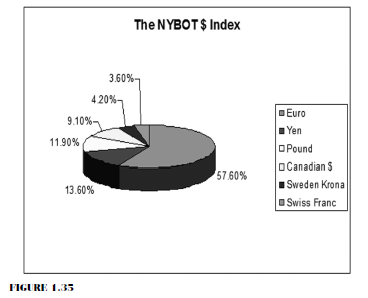
The top
four include the euro, which is the heaviest weight at 57.6 percent, followed
by the Japanese yen at 13.6 percent, then the British pound at 11.90 percent,
and the Canadian dollar at 9.10 percent.
The Candlestick and Pivot Point Trading Triggers : Chapter 1. Trading Vehicles, Stock, ETFs, Futures, and Forex : Tag: Candlestick Trading, Stock Markets, Pivot Point : Margin and Leverage, Long or Short, Benefits for Selling Short, Famous Short Plays, Buy and Sell the Spread - The Currency Cash Machine

